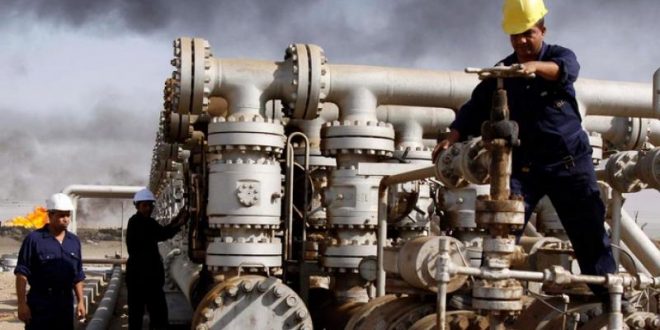Suddenly, the outlook for oil prices has changed dramatically.
From a situation at the end of last year when there was talk of Brent crude “stuck” at $50-$55 per barrel, many experts are now looking for upward of $60 in 2021, with some of the more bullish targeting $65 by this summer.
The “big three” of the American financial scene — Bank of America (BoA), Goldman Sachs and JP Morgan (JPM) — have all recently come out with positive outlooks for oil for the rest of the year.
BoA said a number of macroeconomic factors “could all combine to push oil above the $60 mid-2021 target we introduced back in June last year,” and acknowledged that the oil price could “easily overshoot” its projections.
JPM said a “supercycle” in oil prices — a scenario where surging demand and tightly controlled supply led to prices significantly, albeit temporarily, above current levels — could be on the horizon.
In perhaps the most bullish recent prognosis, analysts at Goldman Sachs — already among the most optimistic in the business — brought forward the date by which they expect Brent to hit $65. They now think it will be at that level six months earlier, in July this year.
“The events of the first weeks of the year have sharply reduced the risks that the market rebalancing gets derailed,” Goldman said.
So what has happened to change sentiment so significantly? While there is a range of positive economic news — from the global rollout of vaccines to a general surge in commodity prices signaling a pick-up in industrial activity — this has been tempered to some degree by the increased number of COVID-19 cases in many parts of the world.
But what appears to have made the difference for the energy analysts was the surprise decision by Saudi Arabia earlier this month to cut an extra 1 million barrels per day from its output. This unilateral reduction — greeted by the Kingdom’s OPEC+ partner Russia as a “new year present” — headed off simmering tensions within OPEC+ and accelerated the drain of global oil inventories still high after the oil market chaos of 2020.
“The unilateral and unexpected production cut from Saudi will offset in our view the near-term negative hit to demand from a quickly spreading virus,” Goldman said.
The cut by Saudi Arabia — which its Energy Minister Prince Abdul Aziz bin Salman said was a reflection of its role as “guardian of the oil industry” — will keep March production at low levels just as global oil demand rebounds sharply as vaccine rollouts encourage more global economic activity.
The other positive factors for Brent, according to Goldman, are the US presidential transition, which is likely to lead to a $2 trillion stimulus package by Joe Biden, and the continuing tight financial discipline within the American shale industry, which is unlikely to significantly raise production until oil hits $65 per barrel.
BoA pointed to the general increase in commodity prices — not just crude oil — as a sign that global economic growth was resuming, especially in Asia.
Regardless of the generally more benign global economic outlook, JPM highlighted the critical role the Saudi oil cut had played in the new bullishness for Brent, and for the longer-term outlook.
“The short-term supply cut demonstrates that Saudi is willing to cut deeper if demand is at risk, and ensures a sustained OECD (Organisation for Economic Co-operation and Development) inventory drawdown, also capable of absorbing increased supply from Libya and Iran.”
It is too early to call the end of the pandemic economic shock, but at least in global energy markets it looks as though rebalancing of supply and demand is well on track.
The oil price is reflecting that optimism too. Brent is now trading at above $56 per barrel — a post-pandemic high.

 Iran Energy News Oil, Gas, Petrochemical and Energy Field Specialized Channel
Iran Energy News Oil, Gas, Petrochemical and Energy Field Specialized Channel



